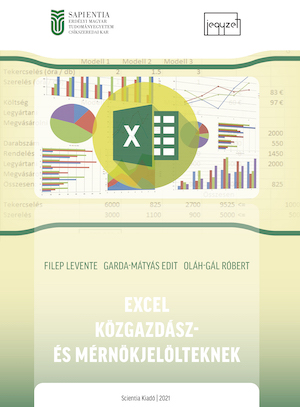Excel közgazdász- és mérnökjelölteknek
Excel for Economist and Engineer Candidates
Author(s): Levente Filep, Edit Garda-Mátyás, Róbert Oláh-Gál
Subject(s): Library and Information Science, Education and training
Published by: Scientia Kiadó
Keywords: Excel; everyday economics; engineering calculations; basic programming with VBA
Summary/Abstract: Excel is one of the most popular programs, perhaps even more useful and familiar than Word. It is relatively inexpensive and easily accessible. It can be used in everyday economics (shopping), household, business, education, and engineering calculations. In the household: it can be used to record our purchases, expenses and income, to track our water and gas consumption, to track public spending, to keep track of our daily work, schedule, etc. Last but not least, Excel can be used in teaching math elements, basic statistics, financial fundamentals, research methodology, basic database management, and also basic programming with VBA. The current course notes were made to justify these statements.Within the Faculty of Economic, Socio-Human and Engineering Sciences in Miercurea Ciuc, this lecture note is the basis of three core disciplines: Fundamentals of Informatics, Informatics and Applied Informatics II, and also the base material for the course Economic Informatics, in which we mainly teach VBA and the economic applications of Excel.We also respectfully recommend this material to high school students as it contains basic knowledge about Excel required for graduation. Understanding this material requires almost no prior knowledge unless the reader wants to gain knowledge in statistics or research methodology. At the same time, being intended for candidates in economics and engineering, it is natural that most examples are related to these topics.At the end of this material, we also try to provide some basic programming knowledge and present an interesting and innovative graphics application. This section is written primarily to assist students in work for scientific communications or undergraduate papers.
Series: Jegyzetek
- Print-ISBN-13: 978-606-975-053-7
- Page Count: 196
- Publication Year: 2021
- Language: Hungarian
- Sample-PDF
- Table of Content
- Introduction
- eBook-PDF

